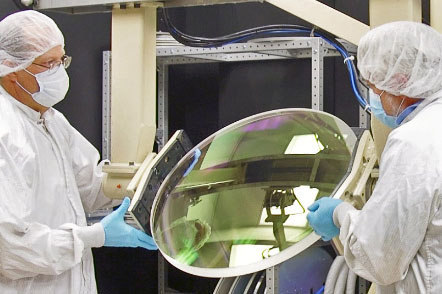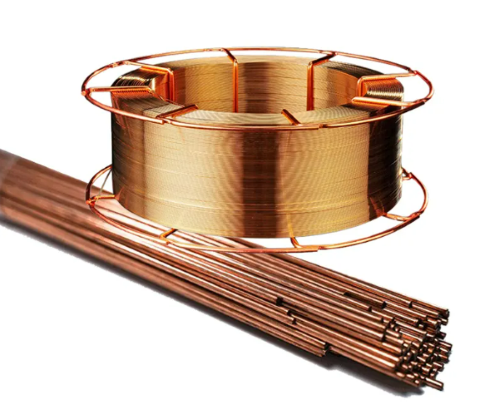Barium Fluoride (BaF₂): An Advanced Material
Introduction
Barium Fluoride (BaF₂) is a versatile advanced material with a unique combination of optical, chemical, and mechanical properties. It is widely used in various industries, including optics, defense, and research, due to its high transparency across a broad wavelength range, excellent resistance to radiation, and stable performance in challenging environments. This article will discuss its characteristics, applications, and advantages, highlighting its role as a crucial material in advanced technologies.

Key Properties of Barium Fluoride
Barium Fluoride’s properties make it a standout material for specialized applications:
1. Optical Transparency
Barium Fluoride exhibits high optical transparency across a wide wavelength range, from ultraviolet (UV) to infrared (IR) regions (150 nm to 14 µm). This makes it an excellent choice for optical lenses, windows, and filters used in spectroscopy and imaging.
2. Radiation Resistance
It has exceptional resistance to gamma and neutron radiation, maintaining its optical properties in high-radiation environments. This is particularly valuable in nuclear and aerospace applications.
3. Thermal Stability
With a melting point of approximately 1,368°C and good thermal conductivity, Barium Fluoride performs well in high-temperature applications. It is also resistant to thermal shock, ensuring stability during rapid temperature changes.
4. Chemical Stability
While Barium Fluoride is relatively stable in dry conditions, it is hygroscopic and can degrade in high-humidity environments. Proper storage and protective coatings can mitigate this sensitivity.
5. Mechanical Properties
It has moderate mechanical strength, making it suitable for machining into various shapes. However, care is required due to its brittleness.
Further reading: Common Fluoride Materials in Industrial Applications

Applications of Barium Fluoride
Barium Fluoride’s unique properties allow it to serve in diverse applications across industries:
1. Optics and Photonics
Barium Fluoride is widely used in the optics industry for components such as:
- Lenses and Windows: Its broad transmission range makes it suitable for UV, visible, and IR lenses and windows used in spectroscopy, astronomy, and laser systems.
- Filters and Prisms: BaF₂ is often used in optical systems requiring precise light dispersion or filtering, especially in IR imaging devices.
2. Aerospace and Defense
The material’s resistance to radiation and thermal stability make it ideal for:
- Satellite Instruments: BaF₂ components are used in spaceborne sensors and imaging systems to withstand extreme conditions.
- Military Optics: Infrared imaging systems and laser rangefinders benefit from its optical clarity and durability.
3. Nuclear Applications
Due to its radiation resistance, Barium Fluoride is employed in nuclear technologies:
- Radiation Detectors: It serves as a scintillation material for detecting gamma rays and neutrons in medical imaging, particle physics, and nuclear safety monitoring.
- Radiation Shielding: Barium Fluoride coatings or composites provide added protection against harmful radiation.
4. Scientific Research
In laboratories, BaF₂ is often used in spectroscopy equipment and as a substrate material for experimental setups involving UV and IR light.
5. Semiconductor and Electronics
Its optical properties make it suitable for lithography and laser applications in semiconductor manufacturing.
Challenges in Using Barium Fluoride
Despite its benefits, Barium Fluoride has some limitations:
- Hygroscopic Nature: BaF₂ absorbs moisture, which can degrade its optical and structural properties. Protective coatings or storage in dry environments are necessary to address this issue.
- Brittleness: Its mechanical strength is moderate, and improper handling can lead to fractures or surface damage.
- Cost: Compared to more common optical materials, Barium Fluoride can be more expensive, especially when used in large quantities or high-precision applications.
Best Practices for Handling and Storage
To maximize the performance and lifespan of Barium Fluoride components, consider the following precautions:
- Storage Conditions:
--Keep in a low-humidity environment.
--Use desiccants and airtight containers for long-term storage.
- Protective Coatings:
--Apply moisture-resistant coatings to surfaces exposed to the environment.
- Handling:
--Avoid excessive mechanical stress during machining or installation.
--Use clean, non-reactive tools to prevent surface contamination.
Other Fluorides
Other fluoride compounds are crucial in the field of optics due to their unique optical properties, including high transparency, low refractive indices, and resistance to ultraviolet (UV) and infrared (IR) wavelengths. Other key fluoride-based optical materials and their applications include:
- Calcium Fluoride (CaF₂): Widely used in lenses and windows for UV and IR spectroscopy due to its broad transmission range and low absorption.
- Magnesium Fluoride (MgF₂): Commonly employed as an anti-reflective coating and in optical components for UV optics, lasers, and astronomy.
- Lithium Fluoride (LiF): Known for its excellent UV transmission, making it ideal for applications in deep UV lithography and high-energy lasers.
- Zirconium Fluoride (ZrF₄): A key component in fluoride glass fibers used for mid-IR transmission in advanced telecommunication and sensing applications.
Conclusion
Barium Fluoride (BaF₂) is a vital advanced material with applications spanning optics, defense, nuclear technology, and scientific research. Its unique combination of optical transparency, radiation resistance, and thermal stability makes it indispensable in environments where precision and durability are paramount.
Despite challenges like hygroscopicity and brittleness, advancements in coatings and storage methods are overcoming these limitations. As technology evolves, the importance of Barium Fluoride is expected to grow, solidifying its role as a cornerstone in cutting-edge industries. For more advanced materials, please check Stanford Advanced Materials (SAM).



